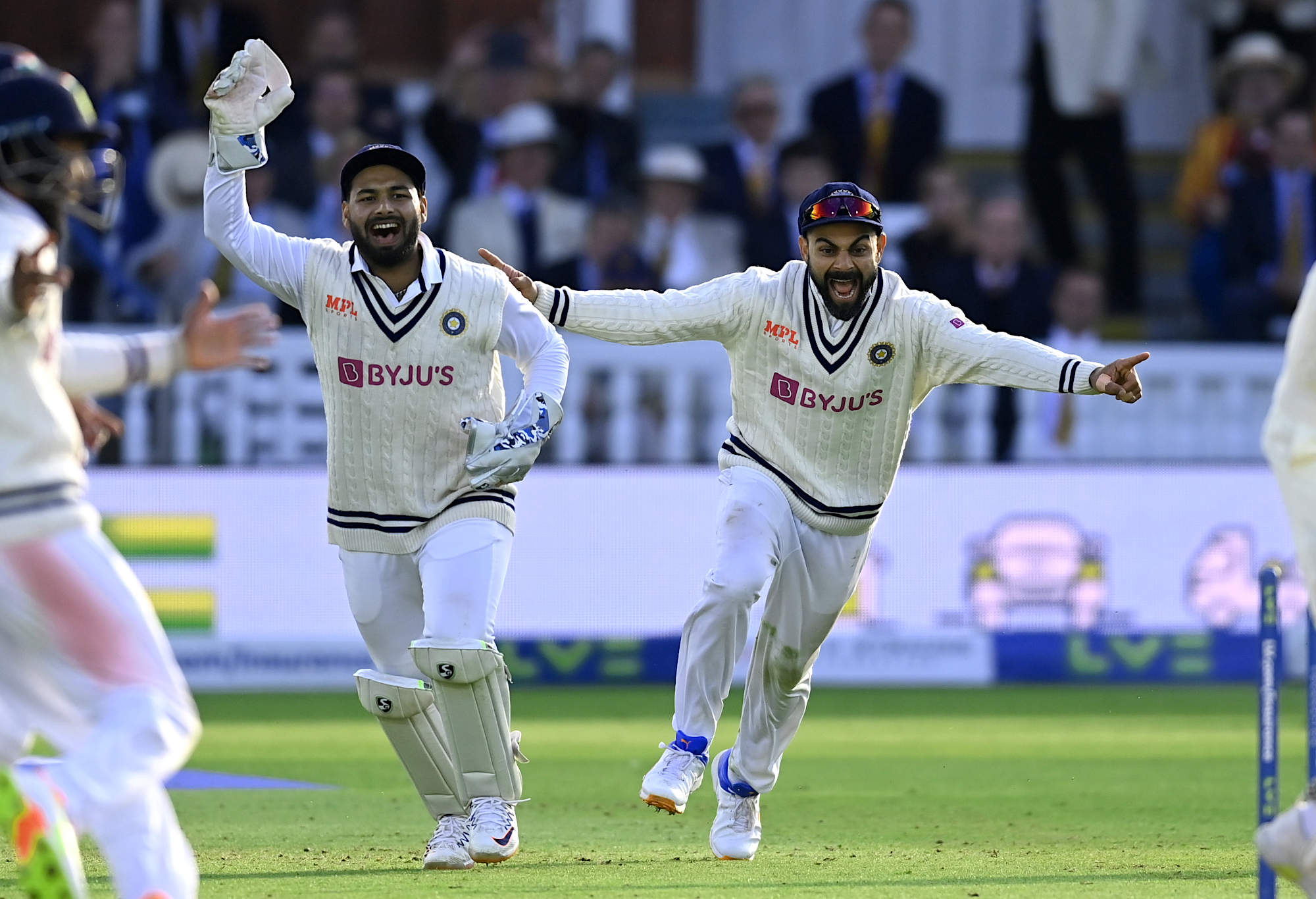Vikram Rathour, the Indian batting coach, commented recently that the need to win home matches as part of the World Test Championship forces teams to prepare pitches loaded in favour of the home teams.
He made these comments when asked about the raging turners prepared for the Border-Gavaskar series, where the Indian team needs to win by a margin of at least two Tests to qualify for the final. During the Australian summer, we saw a green pitch at the Gabba that resulted in a two-day Test match between Australia and South Africa.
Even though the Aussie curators or officials did not blame the Test Championship for preparing such a surface, if one considers that South Africa was also one of the top contenders for a place in the finals, two and two can be put together.
We have seen similar green decks prepared by the Kiwis during the first Test Championship cycle to help the home team win their matches, often in two or three days.
The recently concluded England versus New Zealand series was played on wickets providing an even contest between bat and ball. The second Test match turned out to be historical, with the Kiwis pulling off a one-run victory. How much did the fact that this series was not part of this Test Championship cycle play a role in the Kiwis opting to provide better tracks?

Kane Williamson has had a standout year for the Black Caps. (Photo by Phil Walter/Getty Images)
Is the qualification progress a significant factor in lopsided pitches and three-day Test matches?
When the ICC announced the Test Championship, it was touted as a crowning event that would make every Test match count. However, the randomly distributed schedules and the number of matches in a series have made many experts question the format. Despite these criticisms, the players and fans welcomed the first cycle and congratulated the Kiwis wholeheartedly on winning.
To answer the tricky question of the championship’s negative impact on pitches, let us examine if this phenomenon of ‘doctoring’ is new to cricket. Historically, pitches have varied in their nature across different countries. India has produced turning pitches, England and New Zealand have provided greenish seaming and swinging conditions and Australia, South Africa and the West Indies have made hard and bouncy tracks, sometime with grass to help seam bowling.
If one looks at the tradition of pitches across nations, teams have opted to breed their players on a specific style of pitch. They have provided such conditions to their opponents during their home series’ to press home the advantage. There is no evidence that the Test Championship has forced teams to ‘doctor’ their pitches. The debate on the degree of doctoring, like providing a slow turner versuss providing a raging turner, is nitpicking at best.
A team used to playing on low bouncing soft pitches in India cannot suddenly discover their horizontal bat strokes when they tour Australia or South Africa. There has always been doctoring of playing conditions to ensure that the home team starts any Test match with a clear advantage.
A glance at Howstat and the home record of the big three nations proves the above point. Since the late 19th century, Australia has won 255 of their home games and has lost 101. India has won 114 of their home games losing 54, while England has won 230 of their home games and has lost 127.
Each of these teams has won twice as often as they have lost. A reason for this wide gap between win and loss is the long-term doctoring of playing conditions to ensure that their players are at an advantage when the tourists play in their surroundings.
Is the Championship cycle the reason for three-day Test matches? The answer is a resounding No. It is just the latest excuse being used by teams to cover up their long-term strategy to keep their conditions alien. How can teams counter it?
Virat Kohli, when he took over the captaincy of the Indian team, worked on building a battery of fast bowlers to help him win in foreign countries. Under Kohli’s philosophy, India won two Test series’ in Australia, drew one in England, and consistently won Test matches in South Africa.
Before the 2018 series against South Africa, Morne Morkel remarked that teams can no longer provide seaming conditions to play against India and hope to win easily. It shows that with planning, teams can prepare themselves for alien conditions.

Rishabh Pant and Virat Kohli (Photo by Gareth Copley/Getty Images)
Similarly, whenever teams have toured India with two potent spinners or fast bowling exponents of swing, they have woT tests or even Test series’. England won the 2012 series with Graeme Swann, Monty Panesar and Jimmy Anderson. Australia won two Test matches in Pune and Indore with effective spin bowlers like Nathan Lyon, Steve O Keefe, Mathew Kuhnemann and Todd Murphy. A focused investment in the grassroots to cultivate a broad-based talent pool to cover all bases can yield sparkling results for visiting teams.
There was a time in tennis when it was near impossible for someone to have a career grand slam as the style of play needed to win on the French clay seemed mutually exclusive to the style necessary to win on Wimbledon’s grass. After Rod Laver, it took over three decades for a player, Andre Agassi, to complete a career slam.
However, in the last twenty years, three players, Roger Federer, Novak Djokovic and Rafael Nadal, have completed career slams. Granted that the Wimbledon grass has become slower and the balls have become fluffier, it is still a tribute to the coaching staff and the players who have moulded their games to win across different surfaces and playing conditions.
The fact that Nadal is still tough to beat at Roland Garros says there is room for some ultra-specialization in this age. The conditions have not become uniform, but some players and coaching staff have risen above the rest to produce such champions.
It is time for the cricketing establishments worldwide to produce a pool of players with varied skills bred on various conditions to help them assemble an eleven best suited for the playing conditions, home or away. Unlike tennis players, who need to build varied skills in one human, the cricketing federations can rely on multiple players to pick up different skills, enabling them to assemble the best-suited eleven for a Test match.






























































































